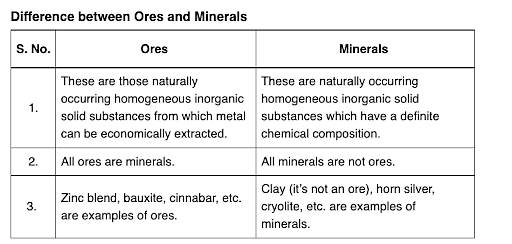Consider the following statements about the oxides of halogens
A. At room temperature, OF2; is thermally stable
B. Order of stability of oxides of halogens is I > Br > Cl
C. I2O5 is used in the estimation of CO
D. ClO2; is used as a bleaching agent
The correct statements are
Consider the following statements about the oxides of halogens
A. At room temperature, OF2; is thermally stable
B. Order of stability of oxides of halogens is I > Br > Cl
C. I2O5 is used in the estimation of CO
D. ClO2; is used as a bleaching agent
The correct statements are
A & B only
A,B & C only
B & C only
A,C & D only
The Correct Option is D
Solution and Explanation
Step 1: Understand the Statements:
We are given four statements about the oxides of halogens. Let's analyze them one by one:
Statement A: At room temperature, OF2 is thermally stable.
This statement is incorrect. OF2 is highly reactive and thermally unstable, decomposing easily at room temperature into oxygen and fluorine.
Statement B: The order of stability of oxides of halogens is I > Br > Cl.
This statement is correct. As we move down the halogen group, the oxides of iodine are more stable than those of bromine and chlorine. Iodine is the least electronegative halogen, leading to more stable oxides.
Statement C: I2O5 is used in the estimation of CO.
This statement is correct. Iodine pentoxide (I2O5) is used as an oxidizing agent in the estimation of carbon monoxide (CO).
Statement D: ClO2 is used as a bleaching agent.
This statement is correct. Chlorine dioxide (ClO2) is widely used as a bleaching agent, especially in paper and textile industries.
Step 2: Analyze the Correctness of Each Statement:
- Statement A is incorrect.
- Statement B is correct.
- Statement C is correct.
- Statement D is correct.
Final Answer:
The correct statements are B, C, and D.
Therefore, the correct option is A, C, and D only.
Top Questions on General Principles and Processes of Isolation of Elements
- In the extraction of iron using blast furnace to remove the impurity (X), chemical (Y) is added to the ore. X and Y are respectively
- TS EAMCET - 2025
- Chemistry
- General Principles and Processes of Isolation of Elements
- What is used for the Thermite Reaction?
- BCECE - 2025
- Chemistry
- General Principles and Processes of Isolation of Elements
- Which of the following compounds is used to cover the surface of a metallic object to prevent corrosion?
- KEAM - 2025
- Chemistry
- General Principles and Processes of Isolation of Elements
- Select the correct statement:
- KCET - 2024
- Chemistry
- General Principles and Processes of Isolation of Elements
- On reaction of Lead Sulphide with dilute nitric acid which of the following is not formed ?
- JEE Main - 2024
- Chemistry
- General Principles and Processes of Isolation of Elements
Questions Asked in TS EAMCET exam
- Match the following and choose the correct option from the lists given below:

- TS EAMCET - 2025
- Microbiology
- $7\hat{i}-4\hat{j}+7\hat{k}, \hat{i}-6\hat{j}+10\hat{k}, -\hat{i}-3\hat{j}+4\hat{k}, 5\hat{i}-\hat{j}+\hat{k}$ are the position vectors of the points A, B, C, D respectively. If $p\hat{i} + q\hat{j} + r\hat{k}$ is the position vector of the point of intersection of the diagonals of the quadrilateral ABCD, then $p+q+r=$
- TS EAMCET - 2025
- Vector Algebra
- If the sum of two vectors is a unit vector, then the magnitude of their difference is:
- A particle is executing simple harmonic motion with an amplitude of 10 cm. If the kinetic energy of the particle at a distance of 6 cm from the mean position is 100 J, then the kinetic energy of the particle at a distance of 2 cm from the mean position is
- TS EAMCET - 2025
- Waves and Oscillations
- Which of the following is an example of antifertility drug?
- TS EAMCET - 2025
- Chemistry in Everyday Life
Concepts Used:
General Principles and Processes of Isolation of Elements
What are Ores and Minerals?
Minerals are the naturally occurring, homogeneous inorganic solid substances. They are having a definite chemical composition and crystalline structure, hardness and color. For example, copper pyrite, calamine, etc.

Impurities in an ore are called gauge. The removal of a gauge from the ore is called concentration ore.
Several steps are involved in the extraction of pure metal from ores. Major steps are as follows –
- Concentration of the ore
- Isolation of the metal from its concentrated ore
- Purification of the metal